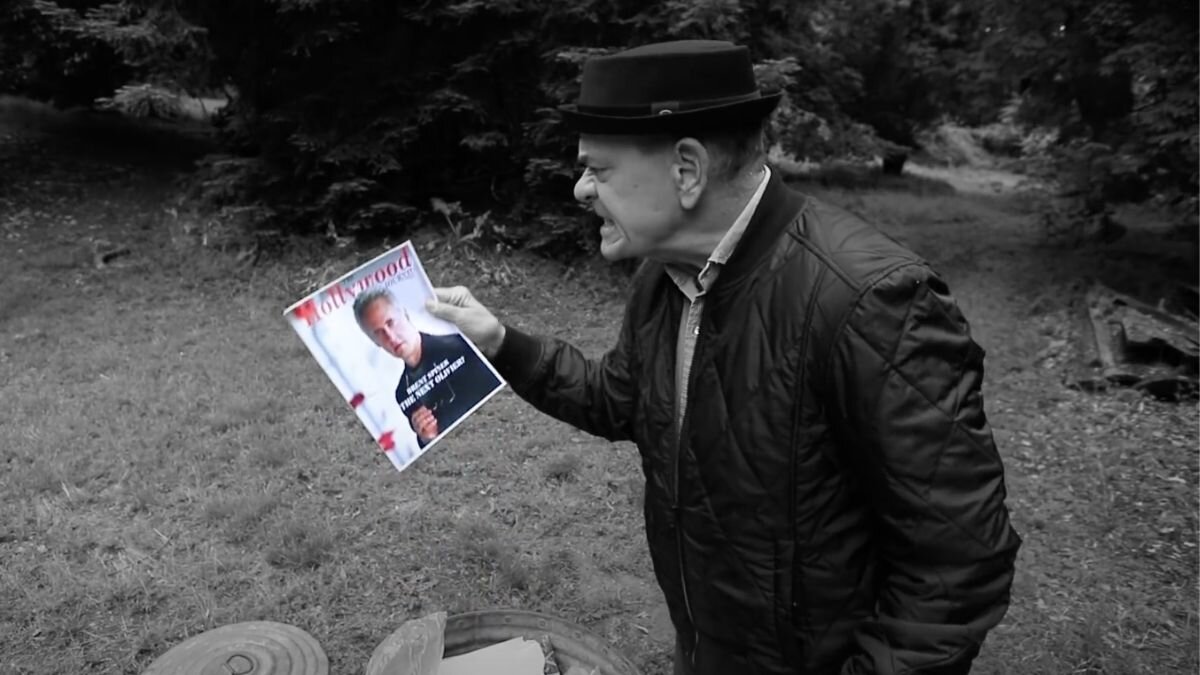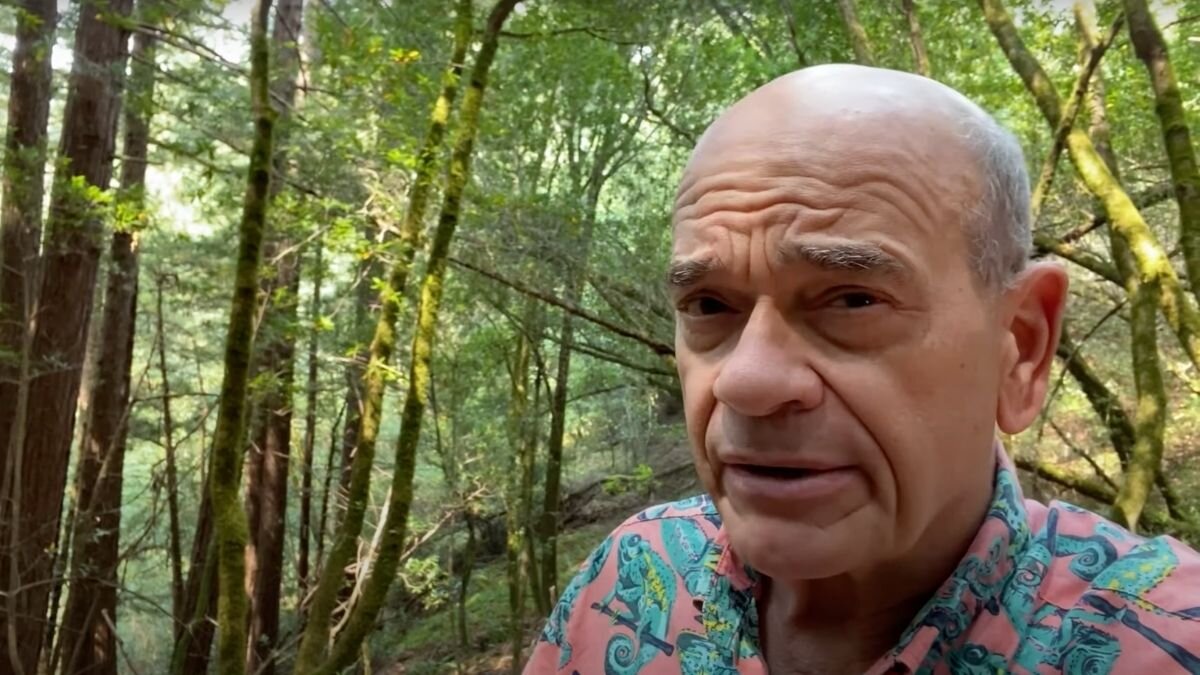SCIENCE: Robert Picardo comments on those stunning James Webb Space Telescope images and a Star Trek: Voyager 4k release

STAR TREK: VOYAGER's doctor, Robert Picardo, is on the Board of Directors for The Planetary Society
JULY 18, 2022 - Last week, NASA unveiled the first images from the James Webb Space Telescope, and they are phenomenal. Named for the second NASA administrator, who served from 1961 - 1968, the JWST’s mission is to allow us to boldly view what humankind has never viewed before. It looks back in time to the very beginning of the universe, providing new information on how planets are born and proving just how small we really are in the grand scheme of things.
Star Trek fans know Robert Picardo as the Emergency Medical Hologram on Star Trek: Voyager. But Picardo also has a deep interest in science and space exploration, and he’s on the Board of Directors of The Planetary Society, an organization headed by CEO Bill Nye whose mission statement is to “know the cosmos and our place within it” and “empower the world’s citizens to advance space science and exploration,” according to their website.
“While Star Trek: Voyager was on in its original run in the late ‘90s, I was first asked to do a fundraising event for The Planetary Society,” Picardo tells me. The Planetary Society, by then nearly 20 years old, drafted Picardo and some of his Trek colleagues, along with actors like Charlton Heston and John Rhys Davies, to read selections from Bradbury’s works to the author himself in honor of his 70th birthday. “Shortly thereafter, I was recruited by the two surviving co-founders, Louis Friedman and Bruce Murray.” The third co-founder, Carl Sagan, had by then passed away.
Picardo was asked to serve on the Advisory Board of The Planetary Society and is quick to point out that, dammit Jim, he’s an actor, not a scientist. He sees his role as that of an ambassador, ensuring that science fiction fans are aware that TPS exists and that they understand that “if they are science fiction fans, then they’re really science fans, and fans of present-day space exploration, not just imaginary space exploration.”
Which is why he and I spoke earlier today. The internet, newspapers, and televised news have all been abuzz with the new images from the JWST. But what do they mean, and why are they so exciting? Let’s dive a little deeper.
The James Webb Space Telescope is a breakthrough in technology, 25 years in the making. “The project was started in 1996, a mere year after Voyager went on the air,” Picardo says, adding, “Probably a year before I started working with The Planetary Society. It took that long to develop!”
The Hubble Space Telescope was a huge leap forward in space exploration technology when it was launched in 1990. “The Hubble took deep field images from low-Earth orbit,” Picardo says. The JWST’s mission is to use what we’ve learned from those images and expand on them. Using infrared cameras, this new telescope can see even farther than its predecessor, peering through dust and gas to see the birth of new stars and the oldest images of the universe we’ve ever seen.
“We have seen the Hubble’s version of the deep field image that was the very first image that was released on July 13th by the Webb. Of course, we now see much deeper and much farther. It’s important to keep the scale of this little piece of space that you’re examining between bright stars that are closer to us. I think that the analogy that Bill [Nye] gives is that the piece of sky that you’re looking at is smaller than a grain of sand held at arm’s length.”
An extreme deep field image taken by the Hubble (Image: NASA / ESA / G. Illingworth, D. Magee, and P. Oesch, University of California, Santa Cruz / R. Bouwens, Leiden University / HUDF09 Team) compared to the JWST's deep field image (Image: NASA/ESA/CSA/STScI)
“This deep field image shows light that is over 13 billion years old,” Picardo tells me, unable to keep the genuine awe out of his voice. Scientists estimate that the formation of the universe took place somewhere in the neighborhood of 13.7 billion years ago. “So it’s a very old light,” he jokes. He’s not wrong. The JWST is showing us the distant past, farther back than we’ve ever been able to gaze before.
“James Webb has delivered on the ‘big picture promise’ of seeing light from the creation of the universe,” Picardo adds triumphantly.
Picardo gives Heidi Hammel a lot of the credit for getting this new piece of technology off the ground. Hammel, another Board member for TPS, is an expert on Neptune, led the Hubbel team that investigated Jupiter’s atmospheric response to Comet Shoemaker-Levy 9’s impact, and is an Interdisciplinary Scientist on the JWST project.
He also points out the inspirational relationship between Star Trek and such projects as the JWST. “They don’t say in Star Trek to ‘go out and search for strange heavy metals so that we can make a cheaper cell phone.’ It’s all about understanding our place in the cosmos. That exploration itself and gaining knowledge is an end unto itself. It’s the discovery that’s everything.”
Picardo’s favorite image from the JWST is of the Carina Nebula, which he describes as “spectacular.” “It’s only because of the color,” he admits. The nebula is 7,500 light-years from Earth and has been nicknamed “The Cosmic Cliffs” in recognition of its craggy shape. This is essentially a nursery for young stars, and the rocky shape is being caused by the radiation from these newborns slowly eroding the nebula’s edges away.
“Carina Nebula,” taken by the James Webb Space Telescope, is also known as “The Cosmic Cliffe” Image: NASA/ESA/CSA/STScI
We also discuss the “Stephan’s Quintet” image, which anyone who’s seen the Christmas film It’s a Wonderful Life may recognize, heavenly bodies standing in for the denizens of Heaven. In reality, the Quintet is a grouping of five galaxies in the Pegasus constellation. The JWST allows us to see them clearer than ever before, revealing shockwaves, tidal tails, and more.
Stephan's Quintet, as shown in IT'S A WONDERFUL LIFE, compared to JWST's image Image: NASA/ESA/CSA/STScI
I jokingly ask Picardo if he’s jealous that “real space” got a 4k release before Star Trek: Voyager. “I don’t quite understand why they haven’t given us a 4k release,” he says with a twinkle in his eye. He looks at the popularity of Star Trek: Strange New Worlds, which gives off an Original Series vibe, and points out, “Voyager, thematically, is really the next in line for being close to The Original Series. I have the feeling that the success of Strange New Worlds will accelerate Voyager being rendered in 4k. Paramount, if you’re listening, pony up the dough and put Captain Janeway in 4k.” Then he laughs as he postulates, “You will never fully be able to appreciate my extraordinary beauty as a hologram until I am in 4k and you can see the holographic pores in my nose.”
Picardo remarks that his mission is to point people who are interested in space exploration in the right direction. “If you’re interested, you can find out more about it at The Planetary Society website. We’re not just an advocacy group, we’re an educational resource for anyone who wants to have a look at our website. And there, people with a very deep understanding of the subject will explain it to you.”
If you would like to get involved in The Planetary Society, either as a member or a donor, you can warp on over to their website. And take a gander at the rest of the new images and learn more about the James Webb Space Telescope here.
T is the Managing Editor for Daily Star Trek News and a contributing writer for Sherlock Holmes Magazine and a Shakespeare nerd. He may have been the last professional Stage Manager to work with Leonard Nimoy, has worked Off-Broadway and regionally, and is the union Stage Manager for Legacy Theatre, where he is currently working with Julie Andrews. after which he’ll be working on Richard III at Elm Shakespeare Company.








